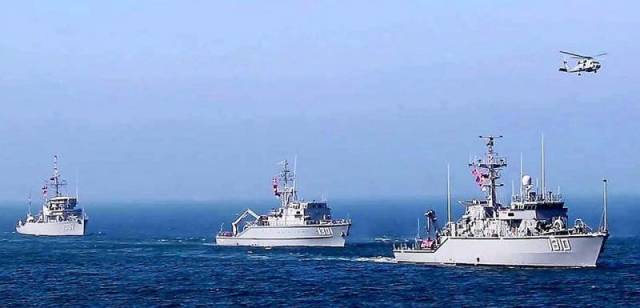
Image source: topwar.ru
The command of the Armed Forces of the self-proclaimed Republic of China Taiwan is forced to calculate and prioritize countering simultaneously two multidirectional strategies of possible military confrontation with the PLA, the online edition of USNI News notes.
First, the Taiwan Navy (ROCN) and ground forces must be able to withstand the risk of a potential full-scale invasion by the People's Republic of China. Secondly, it is necessary to respond to the PLA's constant "provocations" in the gray zone of the Taiwan Strait and around the island.
Disputes about which of these two potential threats to give priority are conducted not only in the Ministry of National Defense of Taiwan (MND), there is no consensus on this issue and Taipei's main ally the United States. The situation is aggravated by the fact that China has significantly increased its military power in all types of armed forces over the past decade and is potentially ready for a military invasion of Taiwan, which it considers its territory.
The General Taiwan Defense Concept (ODC), published in 2018 by former Chief of Staff Admiral Lee Hsi Ming during his tenure, implies an asymmetric response to invasion. The concept implies the use of a large number of relatively inexpensive means of destruction, which should lead to large losses in manpower and disproportionate material costs of the attacking enemy and, according to the idea of military strategists, stop the aggressor.
However, after the resignation of Lee Si Ming, the military command recognized ODC as a limited defense strategy, in fact, prohibiting its implementation. In the quadrennial Taiwan Defense Review for 2021, this concept is not mentioned at all. The main focus remains on the creation of more combat-ready joint forces that can counteract PLA activity in the gray zone, preventing the direct invasion of the Chinese army on the island.
Currently, the ROCN surface fleet consists of old ships transferred to the US Navy, including four Keelung-class destroyers, 10 Cheung Kung-class frigates and six Chi Yang-class frigates, as well as six Kang Ding-class frigates built for Taiwan in France. Experts note that such a number of ships of this class is clearly not enough to confront the Chinese Navy.
To solve the problem with the shortage of warships, the Taiwanese authorities increased defense spending in 2023 by 13.9 percent compared to 2022, bringing it to $ 18.8 billion. At the same time, the emphasis is on the development of its own shipbuilding industry, the largest investments are directed to the construction of submarines. Delivery of the first of eight new submarines produced by Taiwan's CSBC Corporation is scheduled for 2025.
Taiwan has also launched a program to create local light frigates within the framework of the Zhenhai project. State news sources reported that the construction of a pair of frigates with a displacement of 2,000 tons will begin in 2023, and delivery is scheduled for 2026. It is expected that at least eight, and possibly 12 frigates will be delivered in two versions: anti-submarine and anti-aircraft weapons.
Closely monitoring the development of the Russian-Ukrainian conflict, the Taiwanese authorities intend to resume one-year military service from January 2024 in order to increase the number of personnel on active duty. But the training of recruits is difficult, especially at sea, due to the constant presence of PLA forces.
At the same time, US Navy ships no longer visit Taiwan and do not conduct joint exercises with ROCN in the Taiwan Strait due to fears of a direct military conflict with China. Therefore, Taipei has to choose between two strategies: continue to allocate resources to strengthen the naval grouping, while investing in defensive land weapons. Or focus investments on only one of these areas, concludes the author of the material in USNI News.
